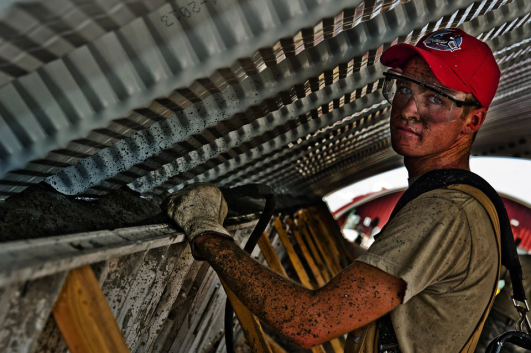Around 900 workers in Canada die every year due to work-related incidents. Work-related injuries are also commonplace. More than 250,000 injuries are reported on an annual basis.
One of the most common types of workplace injuries are musculoskeletal disorders (MSDs). Musculoskeletal disorders are injuries of the muscles, joints, bones, and other associated tissues like ligaments and tendons. Issues in the locomotive system start from mere strains but can end with serious chronic pains. Musculoskeletal issues are a serious threat globally and are the 2nd biggest contributor to disabilities around the world.
Musculoskeletal disorders occur from prolonged misuse of the locomotive system. Misuse can occur at physical workplace tasks that include lifting, pulling, pushing and use of tools etc.
Ergonomics – Defined
Ergonomics is the science of making workplaces as safe as possible by eliminating risk factors and incorporating safety measures. This increases worker productivity and job satisfaction and eliminates the costs related to workplace injuries and musculoskeletal disorders.
Key Ergonomic Factors
- Management Support– the decision to take practical steps to protect employees from injuries and musculoskeletal disorders at workplace is an upper management decision. Management should incorporate employee safety and care in organizational planning and conduct regular inspections and appraisals to ensure that such plans are effective.
- Involvement of Workers– the most useful ergonomic input comes from workers. They can help identify all the work-related hazards and assist the ergonomic process by giving suggestions and feedback to any implementations.
- Training– training helps employees understand the ergonomic process and its benefits. They learn all the important concepts and how common procedures.
- Early Identification– it is important that ergonomic problems are identified and assessed before they develop into serious MSDs. Early identification mechanisms need to be included in the ergonomic procedures being implemented.
- Implementation and Evaluation– the main costs associated with ergonomics are incurred during implementation, evaluation of the revisions of all the measures. Employers should give due importance to employee protection and disburse all the required finances in a timely manner.
Perpetual Nature of Ergonomics
Thus, ergonomics processes use the principles of health and safety to address MSDs. It should be noted that these processes are ongoing functions of organizational management and shouldn’t be tackled like individual projects. Employee safety will become part of the organizational structure if due importance is given to ergonomics in daily activities.
Metro Safety Training
Metro Safety Training provides specialized trainings to improve worker safety and protection. We have helped many organizations secure the wellbeing of their workers and this eventually improves worker productivity and efficiency. Let make your organization safer as well. Contact us for more information.








